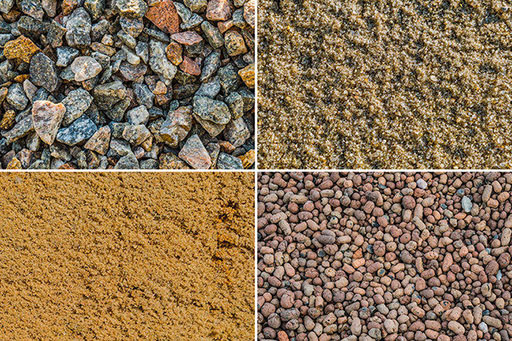4.2 Geological (extraction) in your pocket
You looked at how we extract rocks and minerals in Week 2. In the first part of this week, you are going to look at something slightly different – the aggregate industry. This is sand, gravel and crushed stone, and it’s quite understandable if this is something you’ve not thought about too much before. All the concrete in the world has to have gravel and sand within it, and it has to come from somewhere. Globally, twice as much concrete is produced as plastic, steel, aluminium and wood combined, and over 70% of the world’s population lives in concrete buildings.
Now, you may be wondering what the difference between gravel and crushed stone is. Well, gravel is naturally occurring small stones, whereas crushed stone has been created by breaking up larger pieces of rock. Generally, gravel clasts will be slightly more rounded than crushed stone, and will also often contain many different types of rock, while crushed stone is normally one type of rock that has been broken up.
Activity _unit4.3.1 Activity 4.1 Gravel and sand
Think about where gravel and sand could come from. Make some quick notes below if anything comes to mind. In the next section, you will look at this further.

